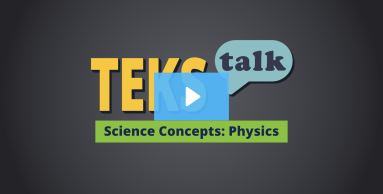
Knowledge and Skills Statement
The further explanation is designed to be a resource for educators that helps them better understand the topic their students are learning. Further explanations may be written at a more complex level than would be expected for students at the grade level.
Heisenberg's Uncertainty Principle
The Heisenberg uncertainty principle is used in many ways, such as allowing scanning tunneling electron microscopes to observe objects too small to observe with light, such as atoms. It is also the basis of hardware random number generators used for data encryption.
Quantum Computing
Quantum computers excel at solving complex combinatorics problems, such as determining the specific part of a complex mechanical system that caused a failure. Quantum computing increases the efficiency of algorithms like the Monte Carlo simulation, a mathematical technique that simulates the range of possible outcomes for an uncertain event using repeated random sampling. The predicted results are based on an estimated range of values instead of a fixed set of values and evolve randomly.
Research
Temme, K., T. Osborne, K. Vollbrecht, D. Poulin, and F. Verstraete. "Quantum Metropolis Sampling." Nature 471, (2011): 87–90. https://doi.org/10.1038/nature09770
Summary: The original motivation to build a quantum computer came from Feynman1, who imagined a machine capable of simulating generic quantum mechanical systems—a task that is believed to be intractable for classical computers. Such a machine could have far-reaching applications in the simulation of many-body quantum physics in condensed-matter, chemical, and high-energy systems. Here we demonstrate how to implement a quantum version of the Metropolis algorithm, allowing us to simulate the equilibrium and static properties of quantum systems.
Research
Merzel, Avraham, Philipp Bitzenbauer, Kim Krijtenburg-Lewerissa, Kirsten Stadermann, Erica Andreotti, Daria Anttila, Maria Bondani, Maria Luisa (Marilù) Chiofalo, Sergej Faletič, Renaat Frans, and et al. "The Core of Secondary Level Quantum Education: A Multi-Stakeholder Perspective." EPJ Quantum Technology 11, no. 27 (2024): 1-28. https://link.springer.com/content/pdf/10.1140/epjqt/s40507-024-00237-x.pdf
Summary: The authors investigated the perspectives of N = 39 high school teachers, university-level physics educators, and physics education researchers regarding the essential concepts in quantum physics (QP) and the corresponding illustrations that should be introduced at the secondary school level. Overall, our study offers valuable insights into the perspectives of different stakeholders, emphasizing the essential concepts and visualizations that should be considered when designing and implementing the teaching of QP at the secondary school level.
